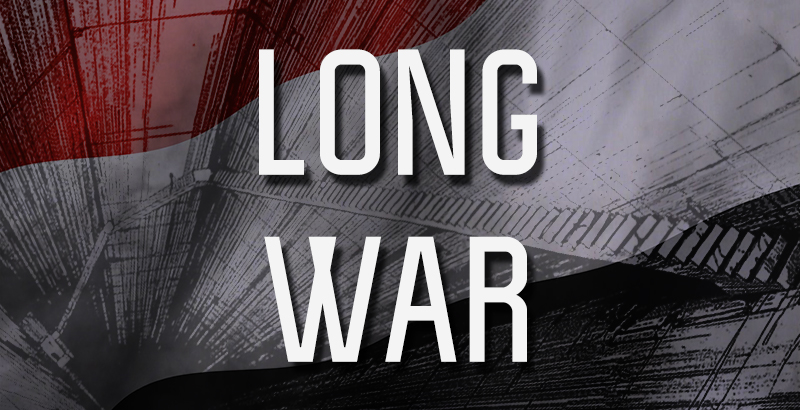
Written by Igor Pejic exclusively for SouthFront
Sweeping across the Middle East like a raging storm, the Arab Spring changed the cultural and ethnic landscape of many Arab societies, including Yemen. Following the examples of Tunisia and Egypt, unsatisfied with the current situation in the country people of Yemen took their active part in this massive pan-Arab event. Unemployment, bad economic conditions and corruption were the primary reasons for the uprising in Yemen, also the country has one of the lowest development ratings in the Muslim world beside Sudan, Djibouti and Mauritius. In spite of the bad economic situation in Yemen from the beginning there were two major forces, anti-government and pro-government protestors. Meditation opportunities were missed in the very beginning, in fact Gulf cooperation Council made a deal in April 2011. But Ali Abdullah Saleh, the President of Yemen at the time, refused to sign it. After a couple more tries to mediate, which resulted in failure mostly because of government attitude, the GCC suspended its mission in Yemen. In next three years numerous clashes erupted across Yemen, the President Saleh left the country, and in 2014. Houthi rebellion swept across northern part of Yemen. All these events lead to present situation in Yemen which resulted in Riyadh’s aggressive war against Houthi population, fueled by fear of expanding influence of Iran on Arab peninsula.
The al Houthi movement traces its roots back to the mid nineties to a political and paramilitary group called Believing Youth, established by Hussein Badr al Din al Houthi. The group was pro-government orientated, but after 2001. When the President Ali Abdullah Saleh aligned himself with the United States the turmoil began. The al Houthi movement opposes US as well as the influence of the Saudi regime which grew stronger over the years. In 2004. when the leader Hussein Badr al Din al Houthi was killed by the police, the gap between two sides in the country deepened. Shiite population which inhabits the northern part of the state has close ties to this movement and also supports their cause in fighting the government and the Wahhabi presence pushed by the Saudis regime. Since the start of the civil unrest in 2011, Iran has stepped up their support in humanitarian supplies to the country despite accusation of smuggling arms for Houthi forces.
The growing unrest in Yemen escalated in 2015. into a full-blown civil war between southern separatists and forces loyal to the President Rabbuh Mansur Hadi who clashed with Houthi forces and forces loyal to the former President Saleh. On first glance these factions seem confusing but the main fight lies between Houthi forces (which represent Shia population) and forces loyal to the government. Between these two large groups is also separated the military of Yemen, one side supporting the regime forces and the other giving their support to the Houthi’s. This gap in Yemen society has its political, religious, ethnic and cultural dimension. Complex situation such as this requires adequate attitude in resolving the conflict. Making some kind of an agreement among factions will be crucial for future meditation and stability in the country. Riyadh military intervention is just making things more difficult. Bombing a country that has a diverse society which is already in a bad situation, without any plans for future stabilization and installment of legitimate government reminds me of US intervention in Iraq in 2003. What happened to Iraq in years after the invasion could potentially occur in Yemen, but with a much dire consequences. Some of those consequences are visible even now, appearance of ISIS and AQAP (Al Qaeda in the Arab Peninsula) among factions fighting the war in Yemen is a clear sign that using only aggressive military intervention cannot lead to a stable solution.
Hope still lies in diplomacy, the GCC meditation attempts back in 2011. had some level of success. Though primarily focused in maintaining their interests, this regional organization was able to bring all of the factions to the negotiating table and resolve some disagreements and ensure some kind of peace. Miscalculation and shortsightedness of regional and global powers is pushing Yemen towards a total collapse which can only serve the interests of extremists and terrorists. In order to avoid this scenario the global community must take a more active role in this conflict and accelerate efforts to negotiate between the factions currently fighting. The peace process that follows can’t be made in order to please the wishes of neighboring countries, on the contrary it must be accustomed for Yemen people, their security and well-being.
When it comes to the Middle East, everything seems to be happening a bit too fast. Power struggle that reaches back to the colonial days, vast array of factions clashing in proxy wars and devastating conflicts for the most wanted commodity(oil) turned this region into a spawning pool for extremists and terrorists which represent a global threat. Controlling the pass between Red Sea and Gulf of Aden, stability of Yemen directly affects the price of oil on global markets, the country is also relatively near Somalia and Sudan which have the potential of producing future extremists and are inherently unstable. Resolving the civil war in a country with an important geostrategic position such as Yemen can prevent future destabilization and provide security to the whole region.



